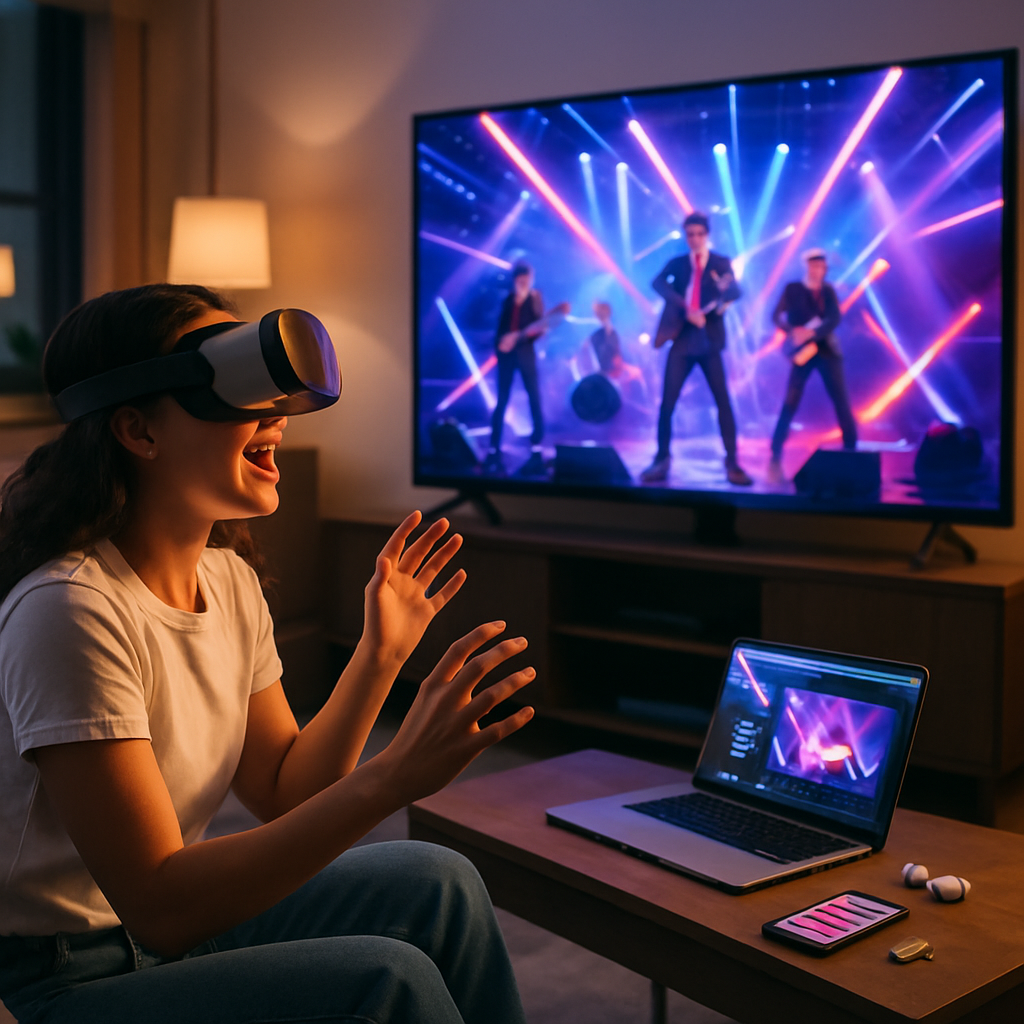
The pandemic knocked us all for a loop, didn’t it? Among the countless shifts in our daily lives, how we experience live music took a particularly surprising turn. Virtual concerts burst onto the scene like a surprise encore we didn’t see coming but suddenly couldn’t imagine the show without. It was a wild ride, one I initially thought would fade away once we could pack into sweaty venues again. But here we are streaming live performances from our couches, sometimes in pajamas, and it seems like this trend is sticking around. Maybe I’m just a sucker for convenience, but the thought of a concert without the hassle of traffic and overpriced drinks is surprisingly appealing.
Virtual Concerts: More Than Pandemic Placeholders
When lockdowns first hit, artists were in a bind. The traditional tour circuit was canceled, and musicians had to innovate or risk fading into silence. Enter the virtual concert a medium that, at first, I thought would be a poor substitute for the real deal. It’s hard to replicate the feel of a crowd’s collective cheer or the ground vibrating under your feet from a booming bass. But artists quickly began embracing the format, offering unique experiences that you just can’t get in a typical venue.
Take Billie Eilish’s “Where Do We Go? The Livestream” concert in 2020. It wasn’t just a singer on a stage; it was an immersive experience with interactive elements and surreal visuals. Even the most skeptical concert-goers had to admit it was something special. And the numbers backed it up over 150,000 people tuned in, according to a report by “Variety.” That’s like filling Madison Square Garden several times over.
But it wasn’t just the big names adapting. Indie artists found that virtual concerts allowed them to reach audiences far beyond their usual local scenes. Platforms like Twitch and Instagram Live became the new gig venues, and suddenly, geography wasn’t an obstacle. It’s hard not to be charmed by the thought of discovering an underground band from your living room, a feat that used to require knowing someone who knew someone, and maybe a plane ticket.
The Economic Puzzle
Of course, virtual concerts aren’t just about the music. There’s a whole economic ecosystem buzzing around these events. Musicians have long relied on touring for income, and with traditional avenues out of commission, they had to get creative with monetizing online performances. Virtual ticket sales, exclusive merch, and even digital tip jars became the norm. And let’s not forget sponsorship deals and partnerships, which have always been a part of the music industry, but took on new forms online.
It’s fascinating, really. The idea that a digital tip jar could sustain an artist’s livelihood would have sounded absurd a few years ago. But here we are, with musicians thriving off the support of fans who appreciate having their favorite musicians in their living rooms, metaphorically speaking. There’s a lesson in there about adaptability, and maybe a smidge of gratitude for the technology that makes it possible.
Yet, there’s a flip side. Some artists find the virtual format limiting or less rewarding financially. A report by “Rolling Stone” highlighted that while some big names thrived, smaller artists still faced challenges in making ends meet. It’s not a one-size-fits-all solution, and the debate on virtual vs. physical concerts continues to resonate within the industry.
A New Era or Just a Fad?
Are virtual concerts here to stay, though? That’s the million-dollar question. I used to be convinced that they were a temporary fix a crutch while we waited for the world to reopen. But as things settled into a new normal, it’s clear that virtual concerts offer something different, not just a second-rate stand-in. They provide access and inclusivity that physical venues struggle to match. I mean, who wouldn’t want front-row access without the elbow jostling?
There’s something refreshing about the way virtual concerts break down barriers. No longer do fans have to live in the right city or pay a fortune for tickets and travel. The accessibility is empowering, especially for fans in remote areas or those with disabilities that make attending traditional concerts challenging. I’ve heard from friends who never considered a live concert before going virtual, and now they’re hooked.
But let’s not sugarcoat it. Virtual concerts can’t replace everything. The thrill of a live audience, the chance encounters, the communal experience all are hard to replicate online. Maybe it’s just nostalgia talking, but there’s a magic in being lost in a crowd, sharing a moment you couldn’t possibly recreate on a screen.
Tech, Innovation, and the Future
Yet, technology keeps pushing the boundaries. Virtual reality (VR) concerts are the next frontier, promising even more immersive experiences. Imagine strapping on a headset and feeling like you’re in the front row, even if you’re technically on your couch with a bag of chips. Artists like Travis Scott have already dabbled in this space, with his Fortnite concert attracting over 12 million players, according to Epic Games. It’s a glimpse into the potential future of live music.
But with all this innovation, there’s always a question of accessibility and tech literacy. Not everyone has the latest VR headset or the tech-savvy to navigate new platforms. It’s a potential stumbling block, one that might slow adoption for some audiences. But then again, tech has a way of becoming ubiquitous quicker than we expect. Remember when smartphones seemed like a luxury?
The Personal Touch: A Hybrid Future
So, what’s the takeaway? Virtual concerts are carving out their niche, and it’s one that blends technology with creativity in a way that feels fresh and exciting. Yet, I can’t help but think we’re heading towards a hybrid future. One where virtual and physical concerts coexist, complementing rather than competing with each other. It’s a bit like the conversation between vinyl enthusiasts and digital music lovers each has its place, and each speaks to a different need or experience.
For artists, this means more opportunities to connect with fans. For us, the audience, it means more choices in how we want to engage with music. Some people will always prefer the noise and energy of a live crowd, while others will opt for the comfort and accessibility of a virtual experience.
As for me, I’m still torn. There’s a special place in my heart for the tangible energy of a live gig, the kind that makes your ears ring and your feet sore. But I’ve also come to appreciate the ease and innovation of the virtual world. Perhaps the real magic is in having both options at our fingertips, ready to suit whatever mood strikes us.
So, next time you find yourself scrolling through concert options, maybe give a virtual one a chance. You might find it offers something unexpected something that makes you rethink what live music can be. Virtual concerts as the future of entertainment? It might just be.

